
Hillerich & Bradsby Company (H&B) is an American manufacturing company located in Louisville, Kentucky that produces baseball bats for Wilson Sporting Goods, which commercializes them under the "Louisville Slugger" brand.

Weldon Brinton Heyburn was an American attorney and politician who served as a United States Senator from Idaho from 1903 to 1912.

Since it earliest days, the economy of Louisville, Kentucky, has been underpinned by the shipping and cargo industries. Today, Louisville, Kentucky is home to dozens of companies and organizations across several industrial classifications.
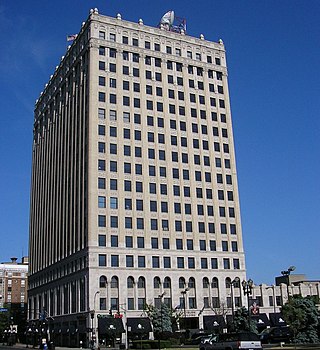
The Heyburn Building is a 17-floor, 250-foot (76-m) building in downtown Louisville, Kentucky, United States. In the early 20th century, it was an integral part of the "magic corner" of Fourth Street and Broadway, which rivaled Main Street as Louisville's business district. It occupies the lot that was the location of the Avery mansion, home of Louisville suffragist, Susan Look Avery. This block of West Broadway had been a posh residential corridor prior to the commercial transition of which the Heyburn Building composed a part.
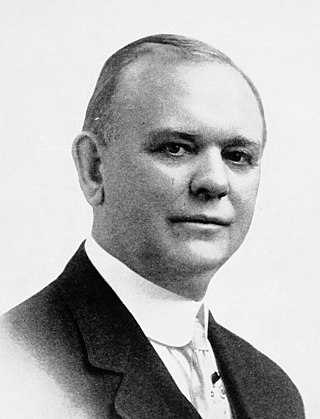
William O. Head was mayor of Louisville, Kentucky, from 1909 to 1913.
Huston Quin was mayor of Louisville, Kentucky from 1921 to 1925.
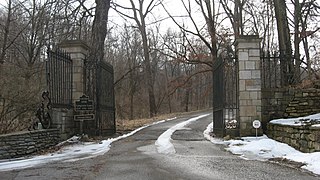
Lincliff is a Georgian Revival house in Glenview near Louisville, Kentucky, United States, built in the early 1910s by William Richardson Belknap.

The Frantz Manufacturing Company located in Sterling, Illinois, is a manufacturer and marketer of conveyor system components and steel ball products used in a variety of applications.
Belknap or Belnap is a surname of Norman origin from England that may come from the Anglo-Norman words "belle," meaning beautiful, and "knap," meaning the crest or summit of a small hill. Although today the "k" in Belknap is generally silent as in the words "knight" or "knee," it is evident from documents dating from the Middle English period that it was originally pronounced as a hard "k." The surname is relatively infrequent, and most Belknaps or Belnaps in America are thought to descend from one man, Abraham Belknap, who migrated from Sawbridgeworth, Hertfordshire, England to Lynn, Massachusetts, about 1635. The surname continued in England. Today, a wide variety of locations and institutions are named Belknap or Belnap, all of which are believed to be connected in some manner to this early Puritan emigrant to America. Places named Belknap or Belnap include over 130 streets, approximately 20 towns, and 1 U.S. county. Natural features named Belknap range from a nunatak near the South Pole in Antarctica, to a Canadian cape near the North Pole, to a seamount beneath the Pacific Ocean between California and Hawaii, to a tiny rocky island in Indonesia in Southeast Asia.

The Simmons Hardware Company was a hardware manufacturer based in St. Louis with locations in six states.
The North Brothers Manufacturing Company was an American manufacturer based in Philadelphia, Pennsylvania that specialized in the making of hand tools, small appliances and some specialized power tools. They were family owned and operated for over 60 years before being acquired by the Stanley Works in 1946. They are probably most well known for their line of tools, particularly the "Yankee" brand of ratcheting screwdrivers.
William Burke Belknap the younger (1885–1965) was the son of William Richardson Belknap and Alice Trumbull Silliman. He was an entrepreneur in the family of William Burke Belknap, the elder (1811–1884), son of Morris Burke Belknap of Brimfield, Massachusetts, who was engaged in the iron furnace industry and died in 1873. The Belknaps were founders, inventors of patented merchandise, and owners of the Belknap Hardware and Manufacturing Company in Louisville, Kentucky. William Burke Belknap was an economist and a professor of economics at the University of Louisville. Leading up to and during World War II, he volunteered for service with the Red Cross in Ramsay and Plymouth, England. He was a trustee of Berea College and a graduate of Yale and Harvard. As a Kentucky legislator, he served two terms as a representative in the Kentucky General Assembly. He was the owner of Land O'Goshen Farms, where he bred and raised sheep and American saddlebred horses, and he was the president of F.C. Co-operative Milk Producers Association.
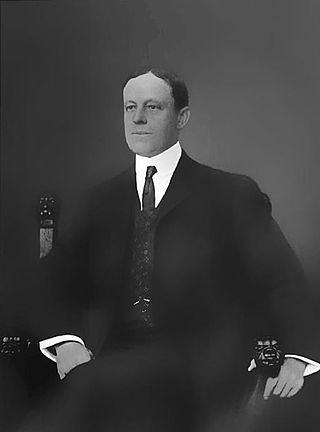
Morris Burke Belknap, also known as Colonel Morris Burke Belknap, was an American businessman from Louisville, Kentucky, and the Republican nominee for Governor of Kentucky in 1903. After earning a degree from the Sheffield Scientific School of Yale University, he worked at his father's hardware company. Later, he co-founded an agricultural implement company. In 1883, he married Lily Buckner, with whom he fathered four children. Following the death of his father, Belknap became vice-president of his hardware company, a position which he held for the rest of his life. Lily Buckner Belknap died in 1893, and he married Marion S. Dumont in 1900.
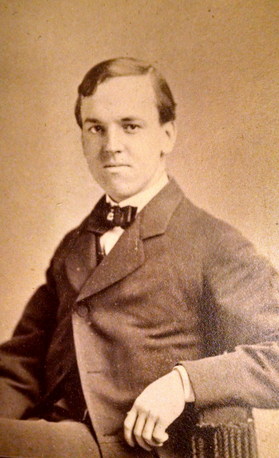
William Richardson Belknap, for 28 years was president of the Belknap Hardware and Manufacturing Company based in Louisville, Kentucky, one of the largest hardware American manufacturing companies and wholesale hardware companies of its time.
Morris Burke Belknap was an early iron foundry owner and American industrialist and "one of the pioneers in development of the iron industry west of the Allegheny Mountains." His son, W. B. Belknap, was founder of the Belknap Hardware and Manufacturing Company, having learned about the business from his father.

W. B. Belknap, also known as William Burke Belknap (the elder) (1811–1889), not to be confused with his grandson William Burke Belknap (the younger) (1885–1965) or great-grandson William Burke Belknap Jr. (1893–1952), was the founder of W .B. Belknap and Company, an early iron and nail business at Third and Main Street in downtown Louisville, Kentucky, which evolved by 1840 into the mammoth Belknap Hardware and Manufacturing Company. He was born in Brimfield, Massachusetts, where he spent his early years helping his father Morris Burke Belknap (the elder) (1780–1877) in an iron furnace foundry business.
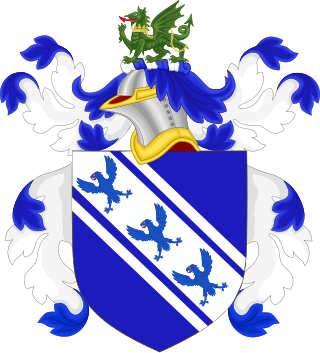
Abraham Belknap (1589/90-1643), of Salem, Massachusetts, not to be confused with his grandson also named Abraham, was born in England. He was one of the first settlers of New England, and all living people with the surname Belknap, Belnap, or Beltoft, are thought to be descendants of him and his wife Mary Stallion.
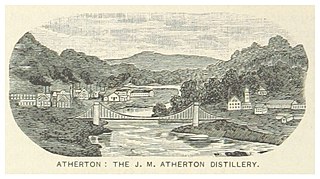
Atherton Whiskey was a pre-prohibition brand of Kentucky Straight Bourbon whiskey first produced by J M Atherton & Co, a chemical and distilling business.













